“Data! Data! Data! I can’t make bricks without clay.” This famous quote from Sherlock Holmes summarizes Dr. Terenzio Ignoni’s outlook on the future of drug development. The SVP of Technical Operations for Gain Therapeutics has over 23 years of hands-on experience in the pharmaceutical space. His successful track record of drug approvals is multicultural, spanning Europe, the US, Japan, and Latin America. Vibrant and enthusiastic, Terenzio’s mission is simple: develop the most optimal conditions for drug programs to get approved. He took the time to break down what goes into that and shared some of the philosophical wisdom he learned along the way.
As Head of Technical Operations at Gain, you oversee all of the CMC (Chemistry, Manufacturing, and Controls), preclinical and clinical. Can you break down the Gain approach to those three segments?
Sure. So what I do, in essence, is I manage all of the development activities, which includes the preclinical and clinical operations with chemistry, and then incorporate manufacturing and controls. When we talk about CMC, this is about manufacturing of the drug substance and the manufacturing of the drug product.
Now a product development could mean the medicinal product or it could be more along the lines of a clinical trial. At Gain, we are currently in the middle of the transition from preclinical to clinical part of development, which is really exciting.
And how do you fit into all of this?
I originally joined as the SVP of Quality and CMC but after a year, the company gave me the opportunity to broaden the scope to also include the clinical, and preclinical parts.
Ultimately, my role is to anticipate potential risks and then put the program in the best possible conditions for success. In doing this, I formulate questions. I evaluate data and facts. I ask, “What facts are we missing?” Doing this allows me to anticipate what might go wrong and address it in a timely manner.
The process is data driven as much as possible to minimize the uncertainty and increase the chance of success. We want to minimize risk and give every clinical trial, or rather every clinical opportunity, the best chance at success.
Let’s discuss more about how that works.
You start from in vitro. This means starting by identifying the molecule that might work. From there, you increase the level of complexity for what is possible and test out these “what ifs” in the animal model. This is where we do the toxicity testing.
Once you have enough confidence that the product is safe, the next step is to move onto manufacturing for humans; the question becomes, How can we manufacture this product to fulfill the statutory requirements (the conditions we need to make it suitable for humans)?What kind of process and what kind of conditions will deliver a product that is not detrimental to safety in human subjects?
That’s a lot of hoops to jump through just to get the trial started. What comes next?
It is, but they’re all necessary hoops. Now, along this path, we’re still asking a lot of questions. “What are the risks?” “What might go wrong?” “What data do we need in order to make qualified decisions?”
Remember, it’s all about having reliable data and the right cultural environment for the relevant analysis to “distill” meaningful information. With reliable data, we can minimize the risks for the program, yes, but more importantly we can minimize the risks for the patients, for the human beings. .And at the end of the day, that’s what this is all about.
I absolutely agree. I’d like to backtrack a little to your career before Gain, when you were the VP of Quality and QP at Jazz Pharmaceuticals (JAZZ NASDAQ). Can you give us a brief rundown of how your current work at Gain compares to the work you did at Jazz?
Yes. The main difference was in the depth of the scope of work. Both types of work are about quality, but it’s not the same. Here the scope is much broader because it spans from the preclinical part up to clinical development. That makes it more exciting for me because it’s challenging from multiple perspectives.
Working at Jazz was a great experience, it really was. Here at Gain, however, I’m exiting my comfort zone and I’m taking on broader developmental activities. So that’s nice. It’s exciting. It’s an opportunity to tap into different fields.
I also get to leverage all of the experience I gained from working in Big Pharma and at other companies. Being in those places was so helpful because I could take all that knowledge and expertise and bring it into this brand new company that is Gain. Here I get to take all the lessons I learned and use them to avoid pitfalls.
That seems like a life lesson we could all use. Now back to CMC, it’s one of the most important activities in drug product development because it occurs during all stages of the drug development cycle. Can you share a bit about working at the different stages of the drug development process?
Oh yes. With any type of drug development, there will be some constraints when it comes to manufacturing a product that is meant to be suitable for human use. So when we are testing in vitro, for example, we don’t really need specific manufacturing and control standards. However, the goal is to eventually move on from in vitro. We want to move from animal testing to clinical trials… and then the requirements become more and more stringent.
So while we’re doing this, we also have to take into account a sort of business acumen and ask, “What will be the safest manufacturing route?” “The most efficient manufacturing route?” Ultimately, we want to know what will be the most suitable formulation and dosage of the drug for the disease you are trying to treat.
The quality requirements for making a drug product are very stringent. There are a lot of FDA and EMA, guidances, to cite few, but the key is being able to read into the details and spot the potential pitfalls before they become problems. That’s how we minimize the risk in manufacturing and give ourselves the greatest shot at getting a drug approved.
And I assume these standards and regulations change once you go from preclinical to clinical?
Absolutely. So from preclinical to clinical, the quality standards are of course not the same. The essential requirement is that the impurity profile of the substance you’re testing in the preclinical environment has to be the same as the one you’re going to test in the clinical setting. But the quality standards that must be applied are different. The quality standards that need to be applied in a clinical setting are significantly higher than those of the preclinical. With clinical, you need a well-defined specification set for the impurities, like residual, solvent, catalyst, and so forth. And the most critically important part is the quality and integrity of the data.
That makes sense. In one scenario, you’re waiting to get the preliminary approval to start testing the product in human subjects. In the second step, you’ve already got it and you’re dealing with actual humans.
Yes. … the level of knowledge associated with your product and your process must increase throughout the development. You have to know exactly what happened, what might go wrong…we test a lot of “what if” situations. Like if the temperature at this stage of the process rises even just a little bit higher or a little bit lower – how will that impact your process? And how will that impact the quality design of your product? The question becomes, “Is the Quality embedded into the process and then into your product?”
_____________ Stay tuned for Part II______________

